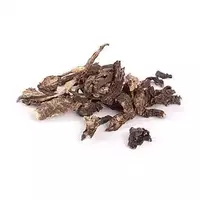Diagline root

Of all the herbaceous plants that are rich in aroma, one of the highest is the diagline. Even though the plant lives only 2 years, its height can reach two and a half meters. Absolutely all parts of the diagline are characterized by the presence of a bitter taste, but a very strong specific aroma.
You can find diagile almost everywhere - it belongs to medicinal plants, but it finds its application not only in folk and official medicine, but also in culinary affairs. Unfortunately, in our country this spicy plant does not enjoy the popularity that Diaghil has gained in European countries, where it is very often used in the preparation of various drinks and many dishes.
As a fragrant spice, it is customary to use either fruits that are extracted from dried inflorescences, or diagline root excavated in autumn. It is worth noting that several types of resins are present in all parts of the diagline along with other useful substances.
An excellent spice - the root of the diagline - is usually used more often than other parts of the plant. It is fleshy, thick, with white flesh. The strongest, most pleasant, pronounced aroma has a two-year-old diaglium root, while the rhizome of younger plants is distinguished by a weakly tender smell. Collecting the roots of the diaglium is customary in early spring or autumn. In May, young shoots are collected, which are also used for food, and seeds - in August-September.
For culinary purposes, the diagline root is cleared of rough skin, and then added to vegetable salads, sauces, soups and hot meals to flavour dishes, and candied fruits are made from it. In addition, the fresh diagbil root is finely chopped, poured with sugar syrup and boiled - the result is a kind of jam.
Powder made from dry Diaghil root is usually added to fried meat, to baking, as well as the first dishes on vegetable or meat broths. It is recommended to add this spice to the composition of hot dishes 5-7 minutes before the meal is completely ready.
Interestingly, on the basis of dried diagbil root, you can brew simply unusually tasty and fragrant tea, which will not only give you minutes of pleasure, but also enrich the body with useful substances. The fact is that in the root of Diaghil there are essential oils, resins, apple, valerian, acetic, angelic and many other acids along with pectin and tannins. That is why the benefits of the diagbile root for the heart, blood circulation and immunity are obvious.
Diagbile root 20 kCal
The energy value of the diagyl root (Ratio of proteins, fats, carbohydrates - ju):
Proteins: 3.7 g (~ 15 kCal)
Fats: 0.4 g (~ 4 kCal)
Carbohydrates: 7.6 g (~ 30 kCal)
Energy ratio (bj | y): 74% | 18% | 152%
 Español
Español Français
Français Português
Português Русский
Русский 简体中文
简体中文 繁體中文
繁體中文 日本語
日本語 한국어
한국어 العربية
العربية Türkçe
Türkçe Қазақ
Қазақ Deutsch
Deutsch Italiano
Italiano Українська
Українська
